Callianax biplicata (Sowerby, 1825)Common name(s): Purple olive shell, Purple olivella |
|
| Synonyms: Olivella biplicata | 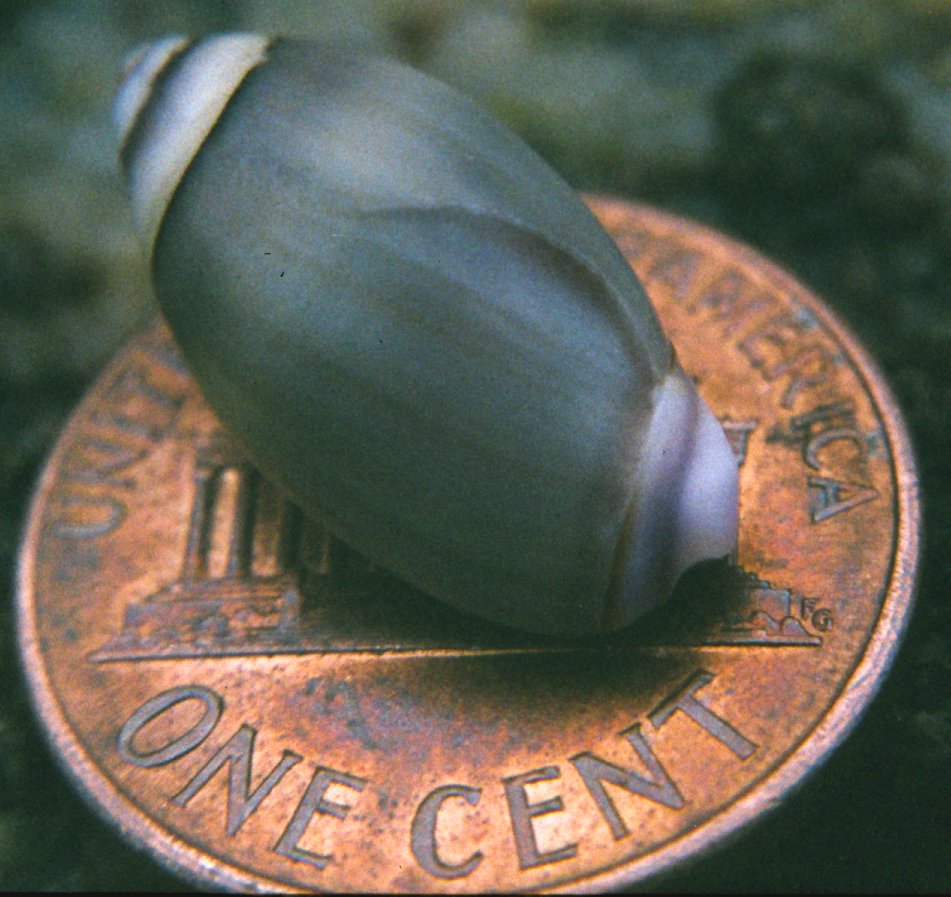 |
| Phylum Mollusca
Class Gastropoda Subclass Prosobranchia Order Neogastropoda Suborder Rachiglossa Family Olividae |
|
| Callianax biplicata, Dana Point, CA 2001 | |
| (Photo by: Dave Cowles, 2001) | |
How to Distinguish from Similar Species: Callianax baetica is more narrow and is usually brown, plus is mostly subtidal and is rarely found on exposed beaches. C. biplicata generally has purple coloration on it, even when worn (picture). C. pycna typically has wavy longitudinal lines on the shell.
Geographical Range: Vancouver Island to Bahia Magdalena, Baja California
Depth Range: Low intertidal to 50 m
Habitat: Sandy bottoms, lagoons, bays.
Biology/Natural History:
Burrows in sand,
leaving a plowed trail behind it (photo).
The foot is wedge shaped to facilitate plowing (photo).
While burrowing it raises its long siphon up through the sand as a
snorkel.
Found nearshore on fairly quiet, protected beaches and farther offshore
on more exposed beaches. Predators include the seastars Pisaster
brevispinus and Astropecten armatus, octopus,
moon snails,
and gulls. The snail digs or crawls rapidly or somersaults if
touched
by Pisaster
brevispinus tube feet. Primarily found
along the open coast
rather than in protected waters such as Puget Sound. Most
active
at night, often move up and down the beach with the tide.
Larger
animals live higher on the beach than smaller ones do. May
congregate
in large clusters (photo).
Probably omnivorous. Will eat kelp blades and live and dead
animal
material. May eat small detritus. Males find
females by following
their tracks, then glues himself temporarily to her shell.
Mating
takes up to 3 days. Egg capsules are about 0.5 mm, are
deposited
individually on small stones, shells, etc. Grow to 1.6 cm
first year,
1-5 mm/year thereafter. Live 8-15 years. May be
parasitized
by trematode larvae (in the gonads--may castrate host). May
contain
high levels of heavy metals such as copper, lead, silver, cadmium, and
zinc.
| Return to: | |||
| Main Page | Alphabetic Index | Systematic Index | Glossary |
References:
Dichotomous Keys:Carlton, 2007
Kozloff 1987, 1996 (as Olivella biplicata)
Smith and Carlton, 1975 (as Olivella biplicata)
Flora and Fairbanks, 1966 (as Olivella biplicata)
General References:
Morris
et al., 1980 (as Olivella biplicata)
Kozloff,
1993 (as Olivella biplicata)
Lamb
and Hanby, 2005 (as Olivella biplicata)
Niesen,
1994 (as Olivella biplicata)
Scientific Articles:
General Notes and Observations: Locations, abundances, unusual behaviors:
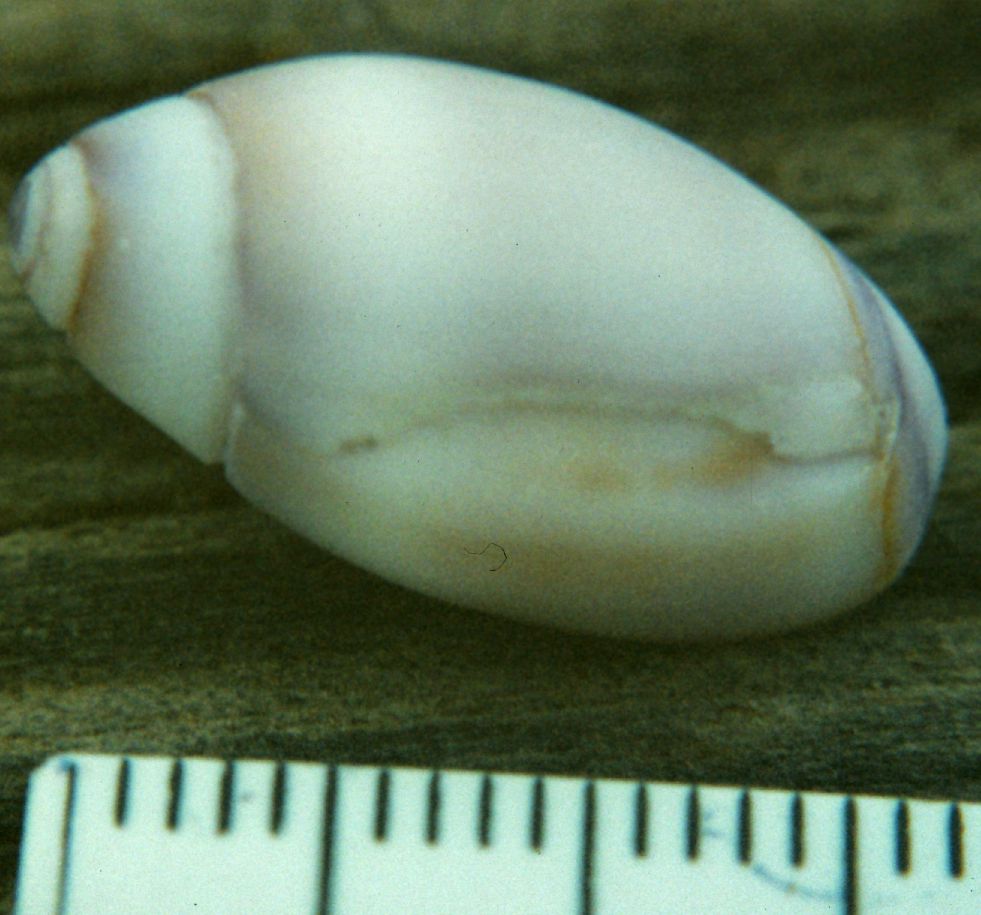
Olive shells are often found worn in shelly debris on the sand. Photo by Dave Cowles, Catalina Island, CA May 1995
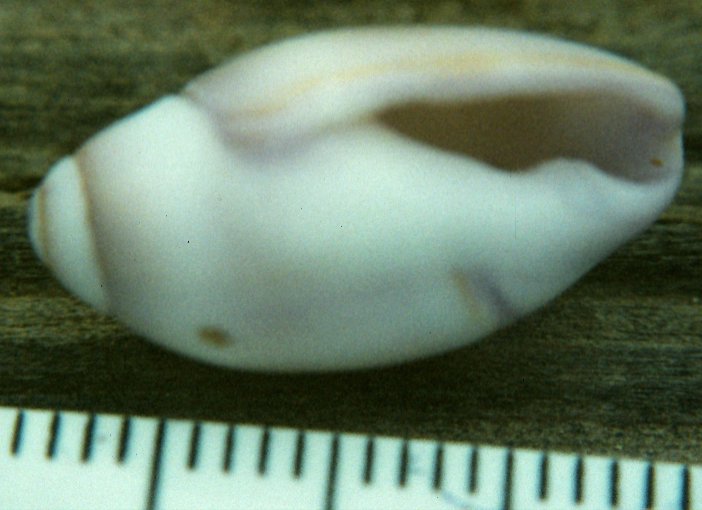
Olive shells have a long narrow aperture and a siphonal notch. Photo by Dave Cowles, Catalina Is., CA 1995
This species is of special value to the Makah indian tribe at Neah Bay.
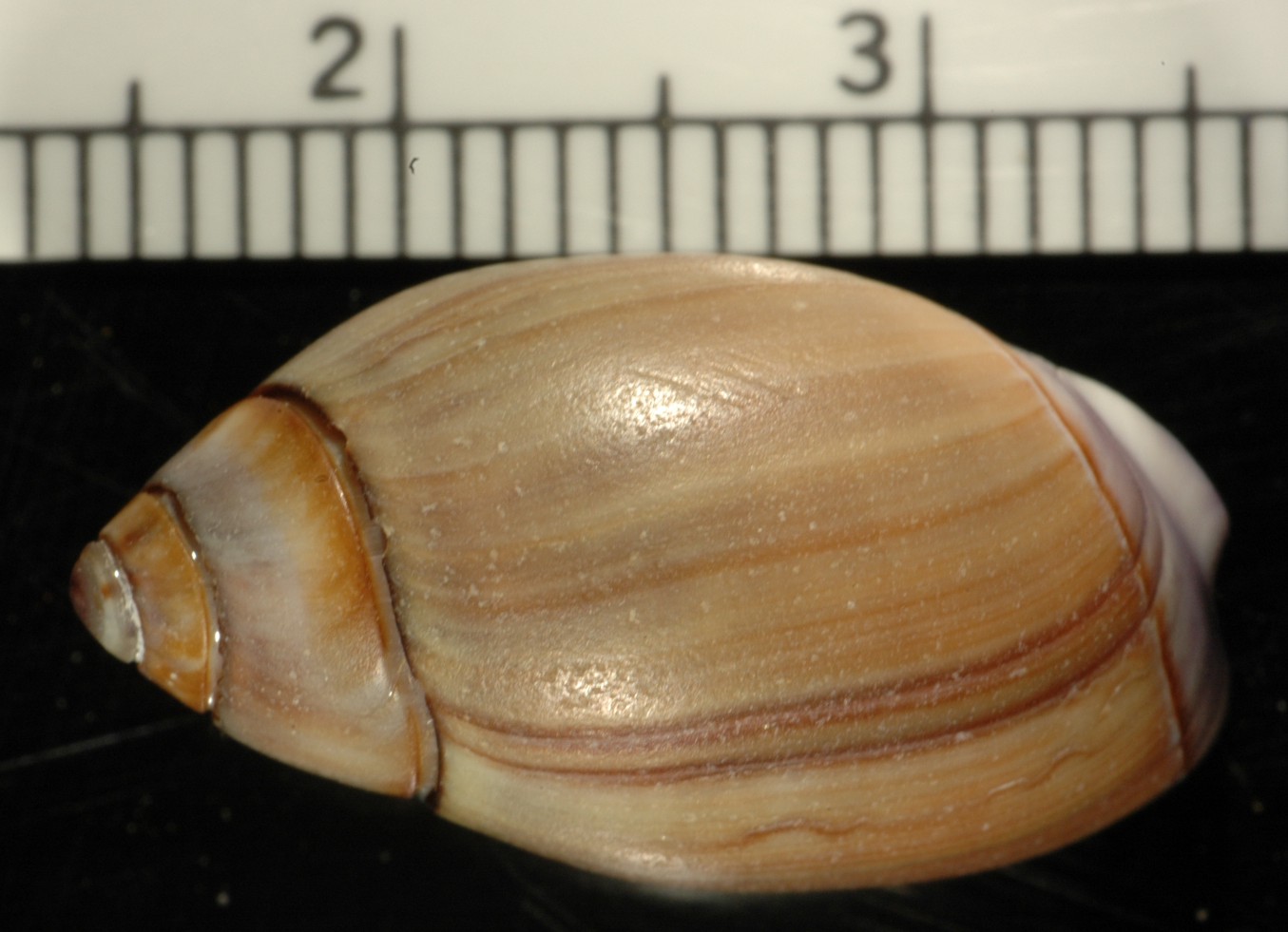
This individual (above and below) was found at Toleak Point, on the
open Washington coast. The scale in millimeters, with
centimeters
marked.

Note that there are two folds on the columella,
and that the white callus on the anterior (right) end is about 1/3 the
total length of the shell.
| The following photos show Callianax biplicata actvity on sandy regions of Shi Shi Beach. All the photos can be enlarged for a closer look by clicking on them. | |
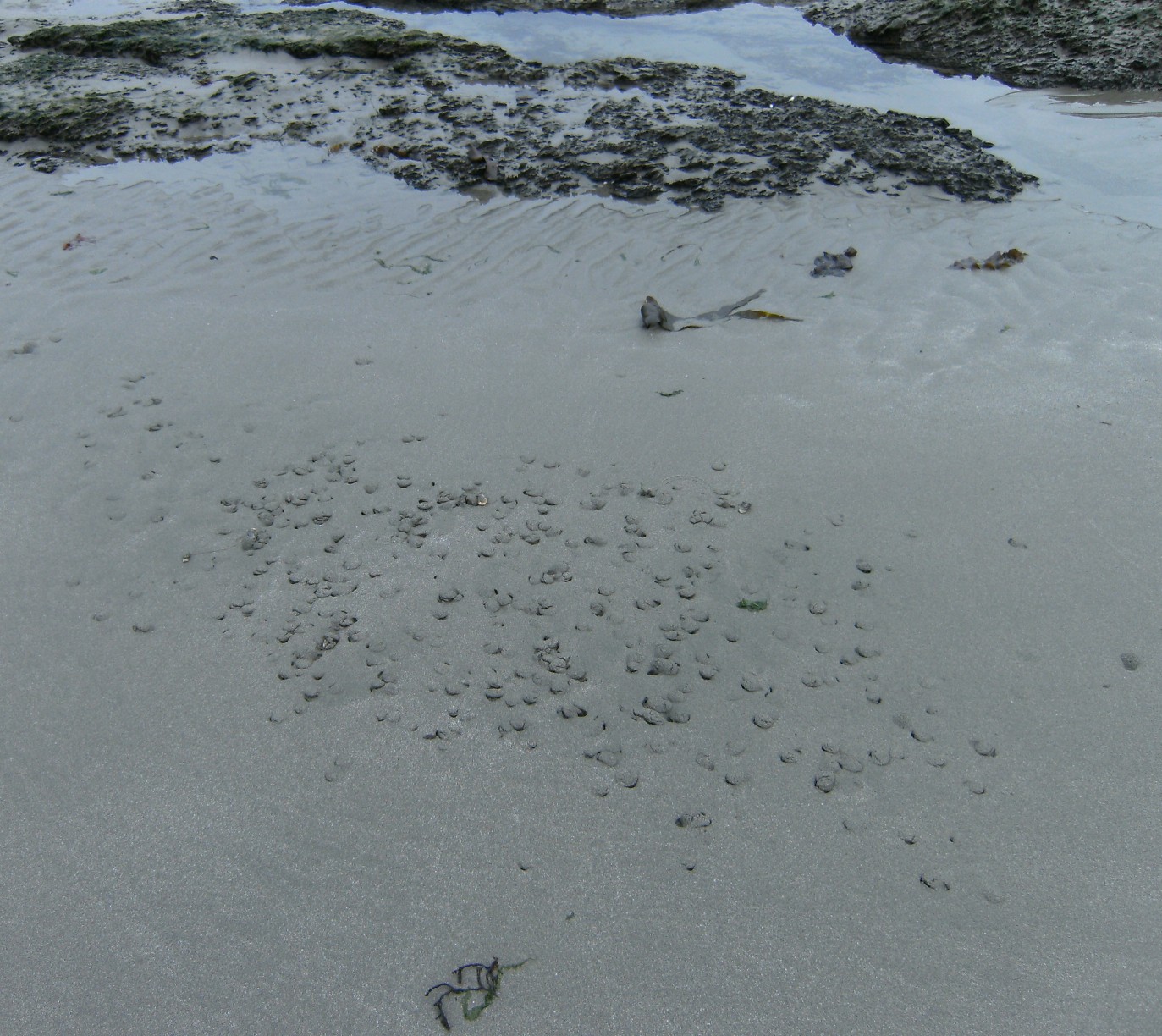 |
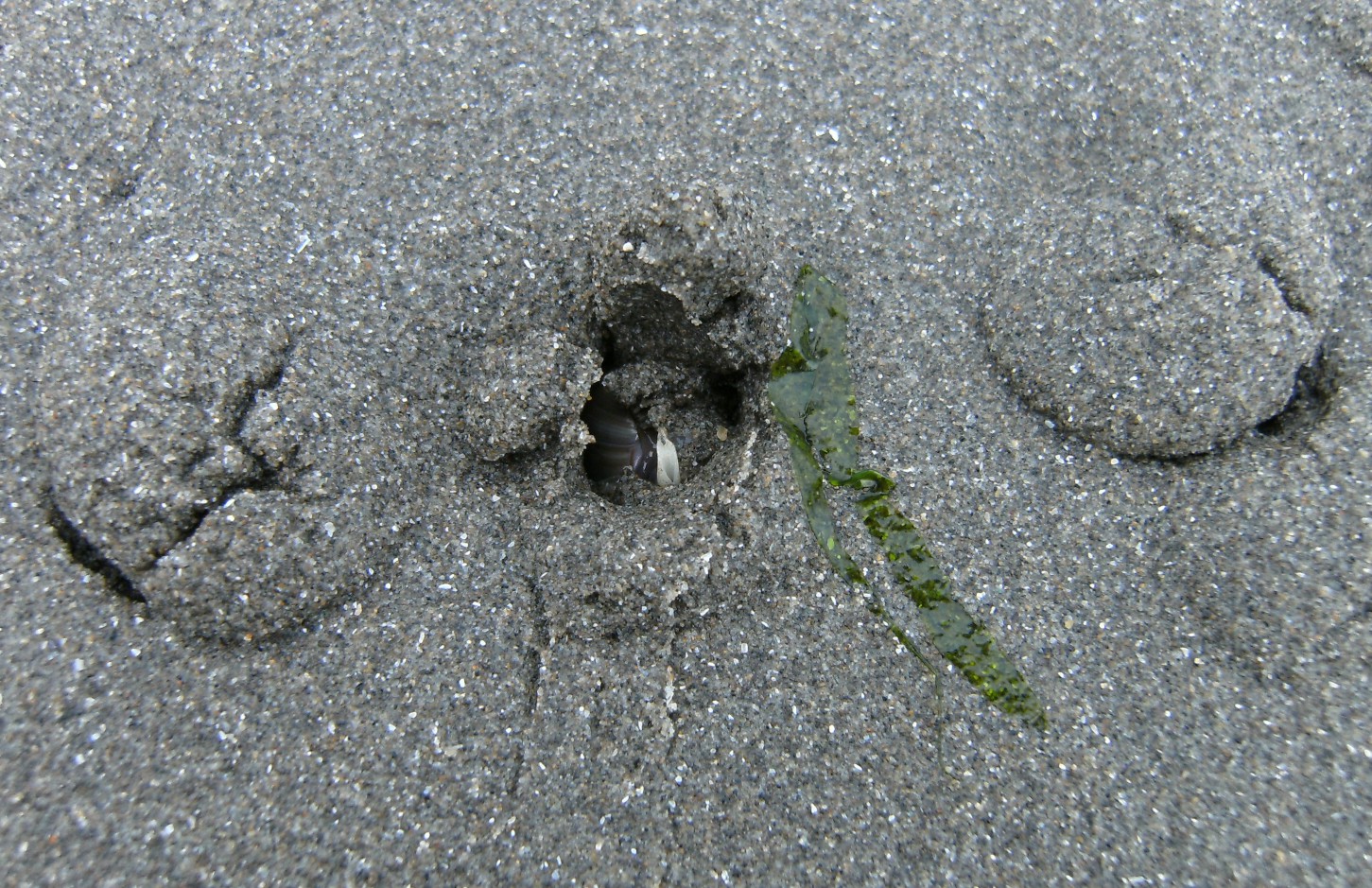 |
| Ths is an aggregation of Callianax
biplicata seen in late July. There was a wide
sandy area the
individuals could have occupied but nearly all the individuals were
aggregated
in a this and a few other small areas near the zero tide
line. The
photo was taken at daybreak in late July, 2008 by Dave Cowles.
|
Most of the individuals in the aggregation at left were
completely
buried in the sand as can be seen on the left and right in this
photo.
A number of them, however, were incompletely buried as seen in the
center.
The center individual is burying itself posterior end-first in the
sand,
and is extending its inhalant siphon up toward the surface.
|
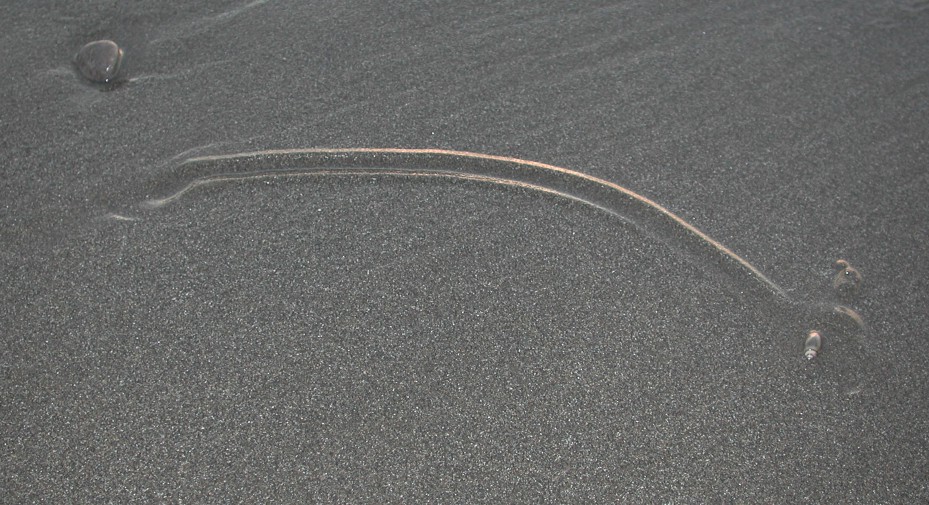 |
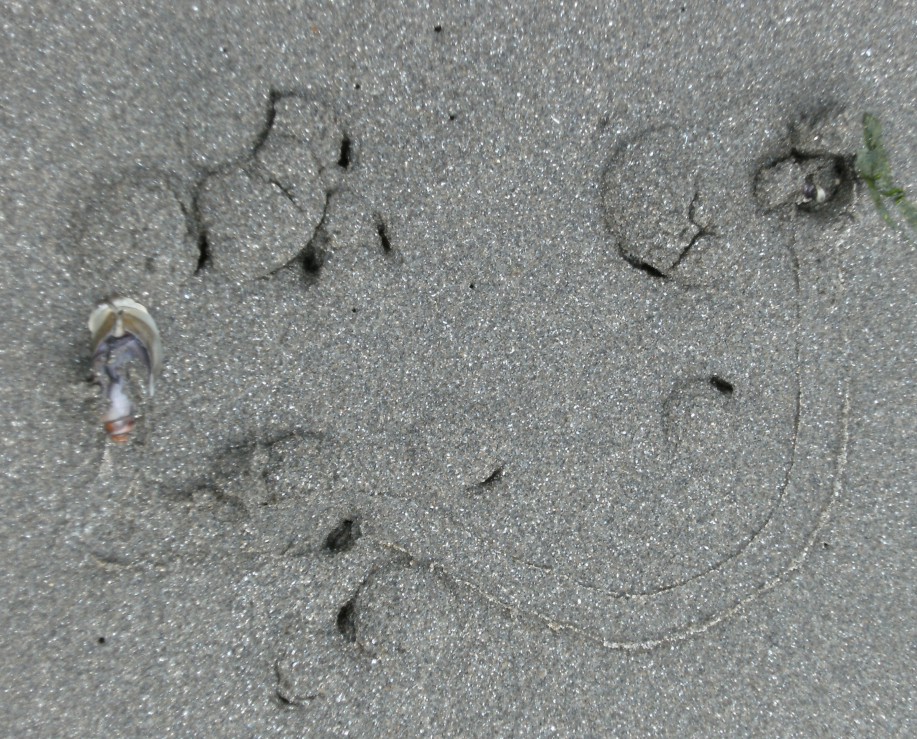 |
| This individual is crawling across the beach.
Unlike the other
photos in this set, this one was taken in 2007, of an individual not in
an aggregation. The individual was buried in the sand at the
end
of the trail but I popped it out for the photo. Photo by Dave
Cowles
at Shi Shi beach, near dawn in early August 2007.
|
This individual appears to have previously been in or
at the burrow
at the right which is still occupied by another individual.
Now it
is crawling around among the burrows on the left. This was
not the
only individual in the aggregation that appeared to have been visiting
other burrows. Because of the tight aggregation of
individuals and
the evidence of visiting burrows, I assume that this is a mating
aggregation.
|
 |
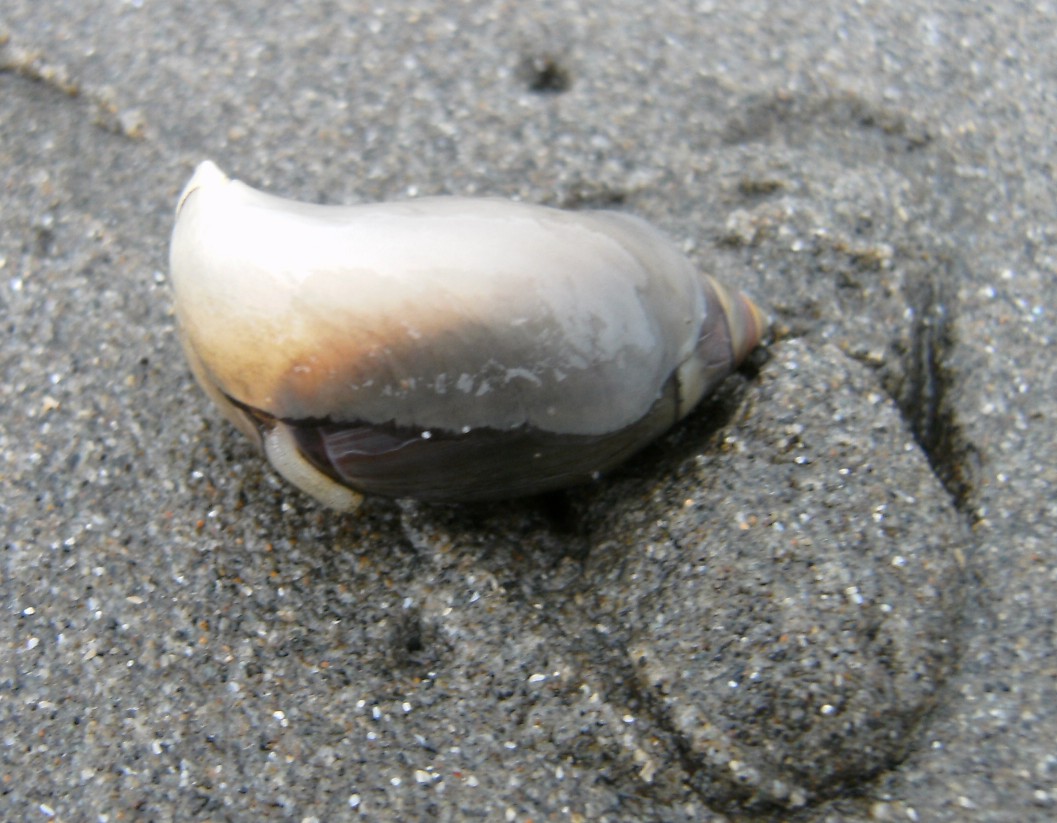 |
| This member of the aggregation is crawling across the
sand. Note
the plowlike configuration of the anterior foot, which would help the
snail
to burrow through sand. Note also the white incurrent
siphon, which is extended forward, and the dark tentacle-like
extension
of the mantle which is held across the top of the shell.
|
This individual member of the aggregation appears to be lying on its left side with its foot and mantle extended around the anterior and ventral end. Note how the inhalant siphon is extending back toward the nearby burrow. I wonder if this individual is preparing to dig into the sand next to the individual in the burrow. |
This photo shows a 1.7 cm-long individual crawling along
underwater
in the lab. Notice the raised incurrent
siphon and the extended mantle.
Photo by Dave Cowles, February 2014
Authors and Editors of Page:
Dave Cowles (2005): Created original page